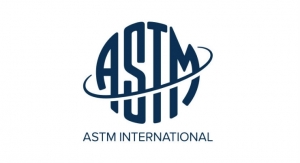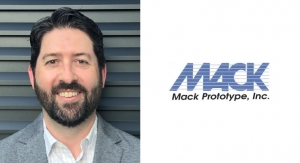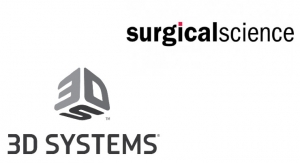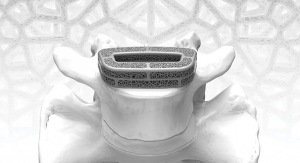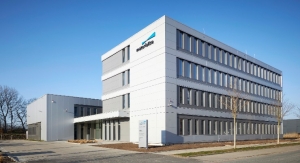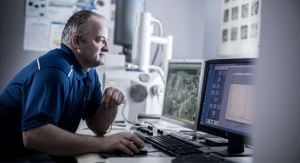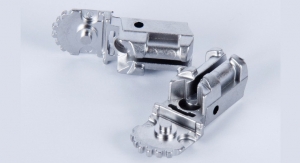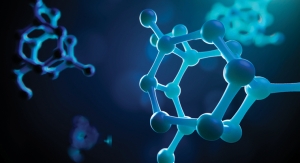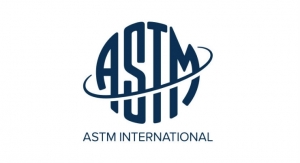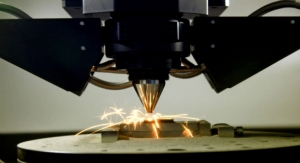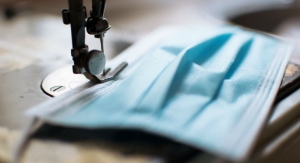Justin Conway, Orchid Orthopedic Solutions07.29.15
What used to take weeks, or even days, to manufacture now only takes a matter of hours—this is the transformational potential that additive manufacturing (AM), also often called 3-D printing, brings to the medical device industry.
Additive manufacturing processes such as laser sintering, electron beam melting, and stereolithography rapidly are expanding the ways engineers can design better products. AM machines quickly produce parts that engineers and end users can hold in their hands to get a sense for size, geometry, balance and functionality. This allows faster decision making because they can see what a production or near-production part looks like—thereby optimizing design and performance with fewer design iterations, decreasing time to production, and getting the product to market faster. In the medical industry, getting products to market sooner can add up to millions of dollars in extra revenue.
Additive manufacturing especially is useful in the expanding field of personalized medicine. A good example is customized, one-of-a kind, patient-specific implants that are very time-consuming and expensive to make using traditional machining methods, but that can be manufactured quickly and at less cost with AM. Implants and devices that are custom-made for individual patients represent a rapidly growing market for AM technologies. In addition, as surgeons and hospitals strive to reduce the time it takes to perform surgery, specialized or customized instrumentation helps them achieve this goal. Making an instrument more ergonomic, or easier to use, helps the surgeon and also lowers the risk that an implant is improperly installed. AM plays a very important role in this achievement, especially if the implant design is unorthodox.
Efficiency, speed and advanced capabilities continue to improve with each new update of an AM machine. In fact, the technology is growing so rapidly that AM soon will move beyond prototyping or low-production machines to full-out production machines that will be able to outperform, at lower cost, traditional manufacturing methods. Production-ready implants that already are being manufactured—and have been approved by the U.S. Food and Drug Administration (FDA)—include acetabular hip cups and femoral stems, dental implants, bone plates, craniofacial implants, and femoral knee implant components.
Top AM Processes
The most common AM technologies for medical products are powder-bed processes (such as laser sintering or electron beam melting), material deposition (extrusion), and stereolithography. These all are ideal methods for manufacturing implants and products that can be reused in a surgical environment.
AM technologies can process plastic and metal. Popular plastics are polylactic acid and acrylonitrile butadiene styrene and their derivatives. Metals include implant-grade titanium, cobalt chrome, stainless steels and aluminum for medical instruments. The vast majority of medical products and implants are made from these materials, which are well-known within the industry and the FDA and have long histories of documented use. The AM process also is able to produce equivalent material properties, compared to the wrought material.
Material producers continue to introduce advanced materials with carefully engineered physical properties, such as strength, flexibility, and temperature and chemical resistance. Manufacturers of AM machines encourage, and work with, device manufacturers to experiment with new materials. Although there always is a learning curve with testing and using new materials, there can be a big payoff for end users in terms of enhanced product quality and performance, longevity, and sometimes improved market share.
Design Freedom
Once engineers are familiar with how additive manufacturing works, they can begin to change their thinking about how to build parts. For example, designers are taught to add large blends and radii so that milling tools can easily make the feature, or because the part feature needs to be stronger. These features, however, typically are considered to be negatives for parts built on an AM machine because they usually turn out to be a challenge to print out correctly. These features often can be eliminated, with the part still being strong enough to perform its intended function, through AM.
Engineers can use a wide array of metals and plastics for AM products, depending on their functional needs. To get the most out of this technology, engineers should identify designs that are not easily made using traditional methods. These parts still can be built on an AM machine, of course, but AM especially shines for making parts that are virtually impossible to manufacture with traditional machining.
AM technologies also are showing excellent promise in the area of injection molding. For injection molding projects, tooling costs are one of the most (if not the most) expensive items in the entire design/production process. It is very costly and time-consuming to change the design of a part once the tool has been made. Additive manufacturing has opened the possibility of making prototype molds that allow engineers and designers to see the end part first, without investing tens of thousands of dollars in tooling, only to find out the design needs to be changed. The AM process also allows designers significantly more freedom to design cooling channels, which can help extend the life of a tool and improve the injection molding process.
AM technologies allow engineers to go from good designs to great designs by seeing functional AM parts and products in solid form early in the design process, allowing them to make design modifications quickly. Prior to AM, engineers were constrained by looking only at virtual 3-D models they created on their computer screens. If they wanted to produce a “real life” part, an order was placed with the prototype shop, followed by a wait of several weeks or longer before the part was finished (at significant cost). Even though the 3-D modeling approach helps engineers capture about 90 to 95 percent of the design, the remaining 5 to 10 percent is becoming increasingly more important, especially when it comes to customer satisfaction. If that last 5 to 10 percent isn’t quite right, the prototype won’t be either, leading to design changes and more iteration, which drives up cost and lowers profit. In the fiercely competitive medical market, this simply is a risk most companies are not will to take.
Having the complete part in hand is essential for good decision-making and something that can’t be simulated on the computer. Prototype AM parts can be made in a matter of hours and then carefully examined and tested to determine if anything needs to be modified in the design. Engineers often know what needs to be changed within 20-30 seconds of picking up the product (typically the last 5 to 10 percent). Not only does this reduce expensive iterations, it accelerates the project and gets an improved product into the marketplace faster.
Reduced Development Costs
Additive manufacturing helps reduce product development costs. How much depends on a number of variables, but in general AM could save orthopedic companies up to 25 percent in development costs compared to traditional methods.
Cost savings include:
AM manufacturers continue to improve their machines, speeding up the process and expanding capabilities. New materials with improved physical and chemical properties are being announced regularly by major material providers. Experienced contract manufacturers have the in-house capabilities to develop specialized AM processes for challenging or complex products and materials. They also have industry-wide experience with what does and doesn’t work when it comes to product designs, materials and various AM approaches. It is recommended that OEMs collaborate with experienced contract manufacturers early in the design stage (even if it is just an idea or a light sketch) to tap their experience for ways to optimize manufacturability and design performance. This is where additive manufacturing is especially valuable—by seeing their prototype in solid form during the initial design stage, engineers can quickly make changes to improve the product and get it into production faster.
Additive manufacturing will continue to change the way orthopedic products are made, making companies more efficient and more competitive in the global marketplace. If you don’t have the in-house AM experience you need, consider partnering with an experienced contract manufacturer that will work with you as a trusted partner and guide you down the AM path. Used the right way, additive manufacturing will transform your operational efficiency, broaden the creative design of your products, and keep you on the cutting edge of medical manufacturing technology.
Justin Conway is a product development engineer with Orchid Orthopedic Solutions. Conway has more than six years of medical device experience. His areas of expertise include 3-D printing, biomaterials, computer-aided design, design control, finite element analysis, geometric dimensioning and tolerancing, and project management. He is the co-inventor of five pending patents and the co-author of an article published in the Journal of Arthroplasty. Conway has a bachelor’s degree in mechanical engineering and master’s degree in engineering degree from the University of Louisville.
Additive manufacturing processes such as laser sintering, electron beam melting, and stereolithography rapidly are expanding the ways engineers can design better products. AM machines quickly produce parts that engineers and end users can hold in their hands to get a sense for size, geometry, balance and functionality. This allows faster decision making because they can see what a production or near-production part looks like—thereby optimizing design and performance with fewer design iterations, decreasing time to production, and getting the product to market faster. In the medical industry, getting products to market sooner can add up to millions of dollars in extra revenue.
Additive manufacturing especially is useful in the expanding field of personalized medicine. A good example is customized, one-of-a kind, patient-specific implants that are very time-consuming and expensive to make using traditional machining methods, but that can be manufactured quickly and at less cost with AM. Implants and devices that are custom-made for individual patients represent a rapidly growing market for AM technologies. In addition, as surgeons and hospitals strive to reduce the time it takes to perform surgery, specialized or customized instrumentation helps them achieve this goal. Making an instrument more ergonomic, or easier to use, helps the surgeon and also lowers the risk that an implant is improperly installed. AM plays a very important role in this achievement, especially if the implant design is unorthodox.
Efficiency, speed and advanced capabilities continue to improve with each new update of an AM machine. In fact, the technology is growing so rapidly that AM soon will move beyond prototyping or low-production machines to full-out production machines that will be able to outperform, at lower cost, traditional manufacturing methods. Production-ready implants that already are being manufactured—and have been approved by the U.S. Food and Drug Administration (FDA)—include acetabular hip cups and femoral stems, dental implants, bone plates, craniofacial implants, and femoral knee implant components.
Top AM Processes
The most common AM technologies for medical products are powder-bed processes (such as laser sintering or electron beam melting), material deposition (extrusion), and stereolithography. These all are ideal methods for manufacturing implants and products that can be reused in a surgical environment.
AM technologies can process plastic and metal. Popular plastics are polylactic acid and acrylonitrile butadiene styrene and their derivatives. Metals include implant-grade titanium, cobalt chrome, stainless steels and aluminum for medical instruments. The vast majority of medical products and implants are made from these materials, which are well-known within the industry and the FDA and have long histories of documented use. The AM process also is able to produce equivalent material properties, compared to the wrought material.
Material producers continue to introduce advanced materials with carefully engineered physical properties, such as strength, flexibility, and temperature and chemical resistance. Manufacturers of AM machines encourage, and work with, device manufacturers to experiment with new materials. Although there always is a learning curve with testing and using new materials, there can be a big payoff for end users in terms of enhanced product quality and performance, longevity, and sometimes improved market share.
Design Freedom
Once engineers are familiar with how additive manufacturing works, they can begin to change their thinking about how to build parts. For example, designers are taught to add large blends and radii so that milling tools can easily make the feature, or because the part feature needs to be stronger. These features, however, typically are considered to be negatives for parts built on an AM machine because they usually turn out to be a challenge to print out correctly. These features often can be eliminated, with the part still being strong enough to perform its intended function, through AM.
Engineers can use a wide array of metals and plastics for AM products, depending on their functional needs. To get the most out of this technology, engineers should identify designs that are not easily made using traditional methods. These parts still can be built on an AM machine, of course, but AM especially shines for making parts that are virtually impossible to manufacture with traditional machining.
AM technologies also are showing excellent promise in the area of injection molding. For injection molding projects, tooling costs are one of the most (if not the most) expensive items in the entire design/production process. It is very costly and time-consuming to change the design of a part once the tool has been made. Additive manufacturing has opened the possibility of making prototype molds that allow engineers and designers to see the end part first, without investing tens of thousands of dollars in tooling, only to find out the design needs to be changed. The AM process also allows designers significantly more freedom to design cooling channels, which can help extend the life of a tool and improve the injection molding process.
AM technologies allow engineers to go from good designs to great designs by seeing functional AM parts and products in solid form early in the design process, allowing them to make design modifications quickly. Prior to AM, engineers were constrained by looking only at virtual 3-D models they created on their computer screens. If they wanted to produce a “real life” part, an order was placed with the prototype shop, followed by a wait of several weeks or longer before the part was finished (at significant cost). Even though the 3-D modeling approach helps engineers capture about 90 to 95 percent of the design, the remaining 5 to 10 percent is becoming increasingly more important, especially when it comes to customer satisfaction. If that last 5 to 10 percent isn’t quite right, the prototype won’t be either, leading to design changes and more iteration, which drives up cost and lowers profit. In the fiercely competitive medical market, this simply is a risk most companies are not will to take.
Having the complete part in hand is essential for good decision-making and something that can’t be simulated on the computer. Prototype AM parts can be made in a matter of hours and then carefully examined and tested to determine if anything needs to be modified in the design. Engineers often know what needs to be changed within 20-30 seconds of picking up the product (typically the last 5 to 10 percent). Not only does this reduce expensive iterations, it accelerates the project and gets an improved product into the marketplace faster.
Reduced Development Costs
Additive manufacturing helps reduce product development costs. How much depends on a number of variables, but in general AM could save orthopedic companies up to 25 percent in development costs compared to traditional methods.
Cost savings include:
- Faster (and fewer) iterations, which can save weeks or months of time;
- Parts can be prototyped closer to the final material faster;
- Faster feedback from customers and end users;
- Easier to prototype highly complicated or irregular geometries, without the need for complicated fixturing or tooling;
- Mistakes or design improvements can be found sooner in the design process; and
- Cost to make a part on an AM machine has the potential to be lower than a standard prototype shop rate.
AM manufacturers continue to improve their machines, speeding up the process and expanding capabilities. New materials with improved physical and chemical properties are being announced regularly by major material providers. Experienced contract manufacturers have the in-house capabilities to develop specialized AM processes for challenging or complex products and materials. They also have industry-wide experience with what does and doesn’t work when it comes to product designs, materials and various AM approaches. It is recommended that OEMs collaborate with experienced contract manufacturers early in the design stage (even if it is just an idea or a light sketch) to tap their experience for ways to optimize manufacturability and design performance. This is where additive manufacturing is especially valuable—by seeing their prototype in solid form during the initial design stage, engineers can quickly make changes to improve the product and get it into production faster.
Additive manufacturing will continue to change the way orthopedic products are made, making companies more efficient and more competitive in the global marketplace. If you don’t have the in-house AM experience you need, consider partnering with an experienced contract manufacturer that will work with you as a trusted partner and guide you down the AM path. Used the right way, additive manufacturing will transform your operational efficiency, broaden the creative design of your products, and keep you on the cutting edge of medical manufacturing technology.
Justin Conway is a product development engineer with Orchid Orthopedic Solutions. Conway has more than six years of medical device experience. His areas of expertise include 3-D printing, biomaterials, computer-aided design, design control, finite element analysis, geometric dimensioning and tolerancing, and project management. He is the co-inventor of five pending patents and the co-author of an article published in the Journal of Arthroplasty. Conway has a bachelor’s degree in mechanical engineering and master’s degree in engineering degree from the University of Louisville.


